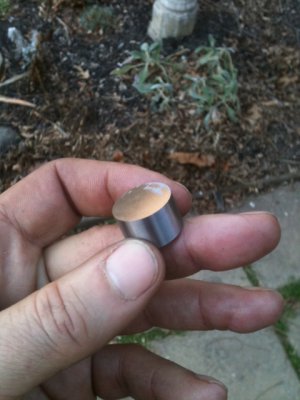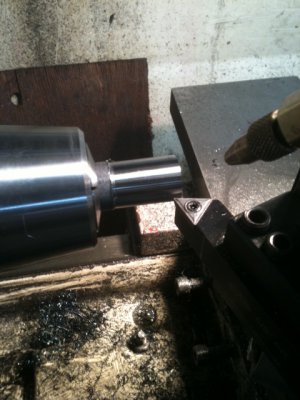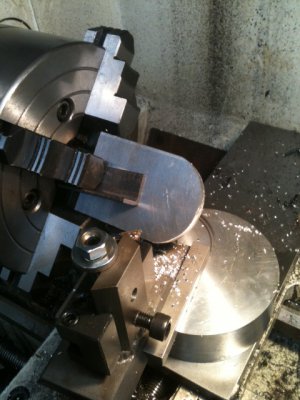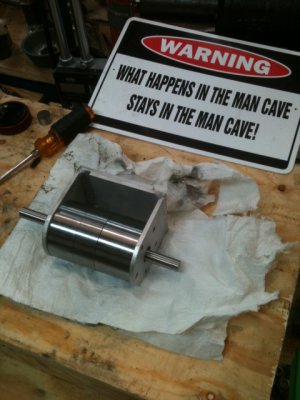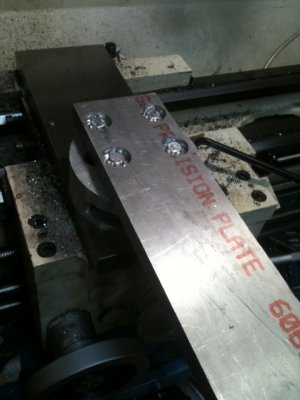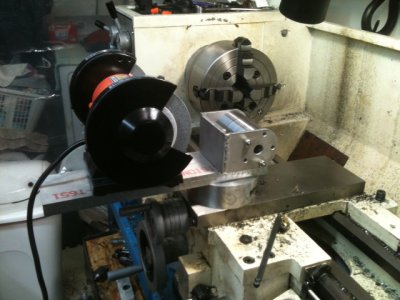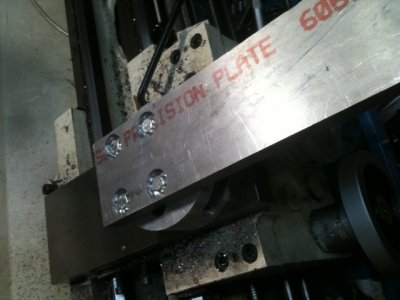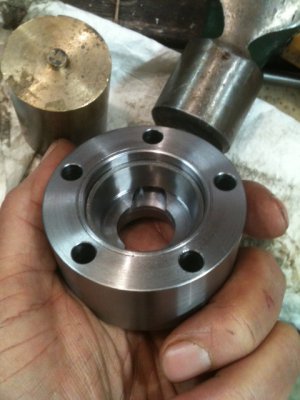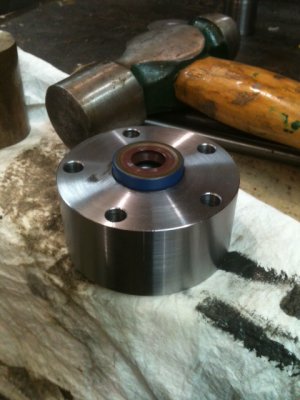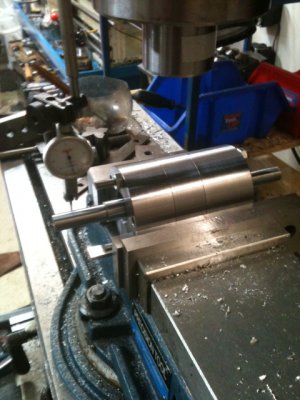Well, this was easy; took about an hour (because I'm in slow-motion mode these days) and the best part is that it only took one try.
So here's how things go...
First, I have absolute faith in my 5C collet chuck and I know with great certainty my tailstock is dead on. -These things are pre-conditions -always! If you don't know and trust your machines, work at it until you do.
I started out by selecting the 15/16 collet sticking the shaft all the way in with just an inch sticking out. -Face it, drill a center hole then, turn about 1/2" of the side down to 3/4" dia. Flip the shaft around and do the other side. Now, grab a 3/4" collet, insert one of the fresh ends, tighten things up and put the live center into position on the tail end. None of this is shown in pictures BTW.
I'm using carbide so, this piece being under 1" and ultimately going down to 1/2" needs to spin between 1400 and 1800 RPMs.
First, I'm going to work from the inside out. BTW: Initially, I wanted the largest diameter in the center to be 1.1" dia but, the closest piece of stock was 15/16". -No big deal because that large diameter only needs to be big enough to push against the thrust washer.
First, I take a pass about 10 thou DoC just to get the scale off. Important: Set your crossfeed dial to zero as a reference point and as you're doing this, never lose track of where the dial was set from the last cut.
The area I'm pointing to is where the taper bearing will be pressed onto. It's critical dimension that needs to be 1 thou over the bearing ID. The diameter needed here is between 0.6875 and 0.6885 (because the bearing ID is 0.6875). I want a slight sweat interference fit.
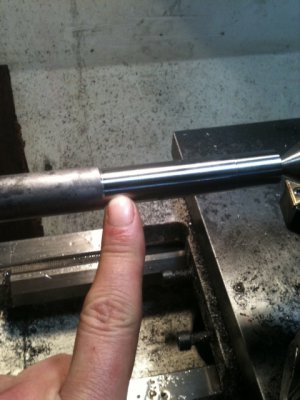
Next, take three critical measurements (left, center, right) of the area you just cut. If you have taper, now's the time to fix the tailstock. And if you don't trust your chuck, spinning between centers is probably a better alternative. In this case, the taper over that 3" segment was about 0.0001" -good enough!
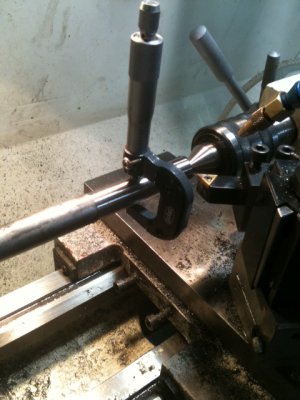
My first measurement here was 0.8835". Now, dial in exactly 10 thou and take another pass. I'm going to make successive passes at 10 thou because with metal this hard it's the lightest cut you can take and still get a good finish. Deeper cuts will bend a shaft this long and thin. Second measurement was 0.8645" so the difference is 19 thou. Dial in 10 more, take a pass and measure. Next one was 0.8450" for a difference of 19.5 thou. This process continues and after several more cuts, it's clear that every time I dial in 10 thou, about 19.5 thou comes off the diameter.
With a starting diameter of .8835 and a final diameter of .6885, I'll need to make about 10 passes. The trick is to carefully watch and adjust your settings so your last pass is taken at about 10 thou DoC. You don't want to take your last pass at 15 thou DoC because that might bend the rod and not take off the 30 thou you were hoping for.
Also, sometimes you'll get intermediate readings like .7693. The dial only has 1 thou graduations so, the next cut you take, split the numbers as best you can.
Heat: I was running mist coolant for the whole job and I could tell the part was about 100 to 110F. Even this slight amount will expand the piece very slightly. Let's say your final cut need to have 19.5 come off. Theoretically, you should dial in 9.75 thou more from your last cut. In a case like this, the part will decrease about 0.0001 when it cools off to 68F. I would make every attempt to read the dial and increase by 9.7 thou (you need to estimate between the lines).
As it turns out, on the last pass of this, the mic read 0.8683. The part has now cooled to room temperature and it's reading exactly 0.8682. I was hoping for 0.8685 so I'm 3 tenths shy but, still within spec of my desired -0.0000, +0.0010 tolerance from 0.8675.
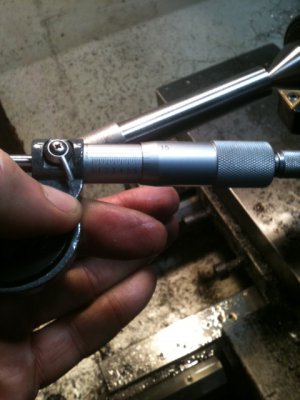
And here's what the finished piece looks like. The 1/2" diameter area, now that it's room temperature is reading 0.5006 (within spec). The intermediate diameter is 0.6252. It was supposed to be 0.6250 (in spec).
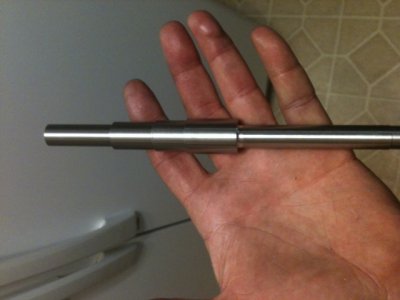
And finally, Senna is right. The proper way to do this is with a cylindrical grinder or a TPG -but you can get real close to perfect with a lathe.
Ray




